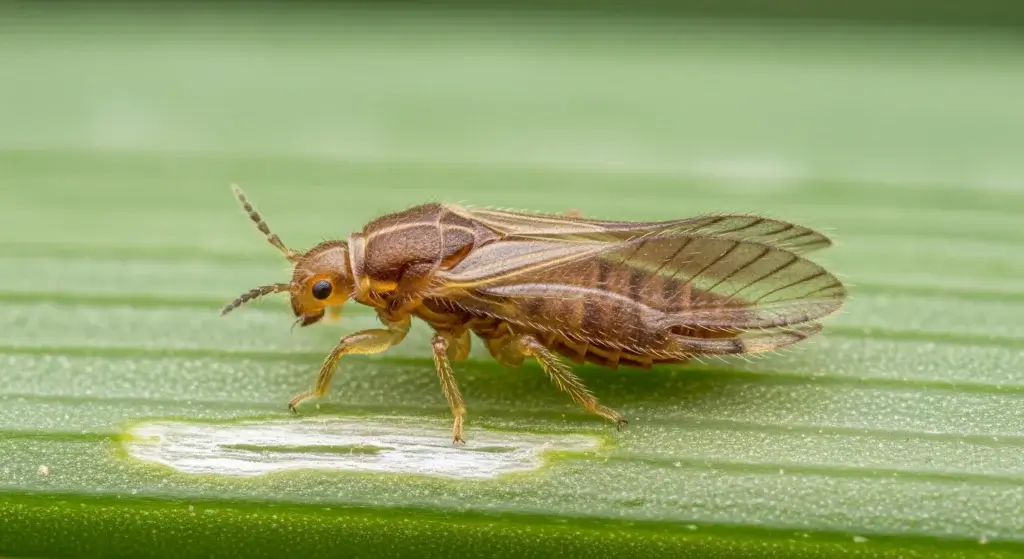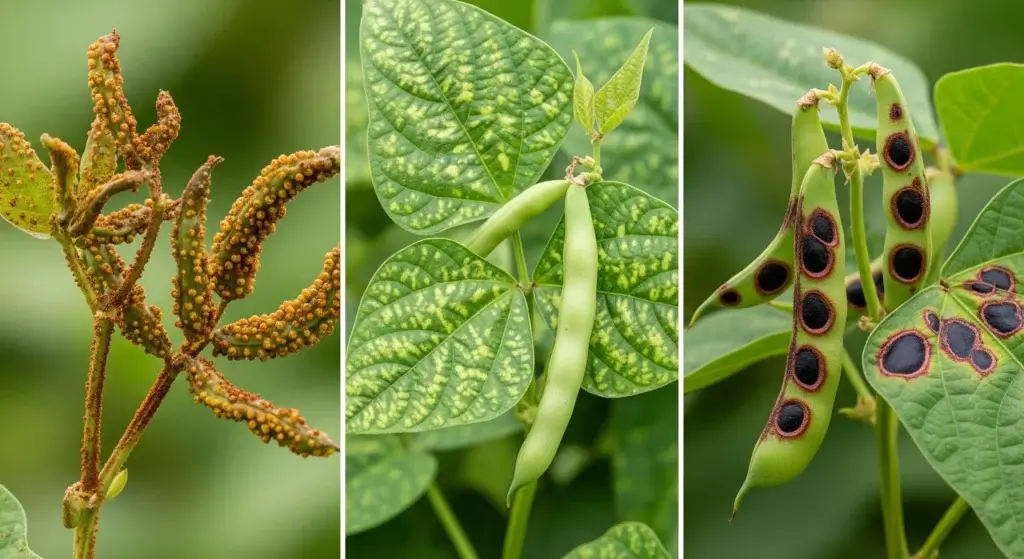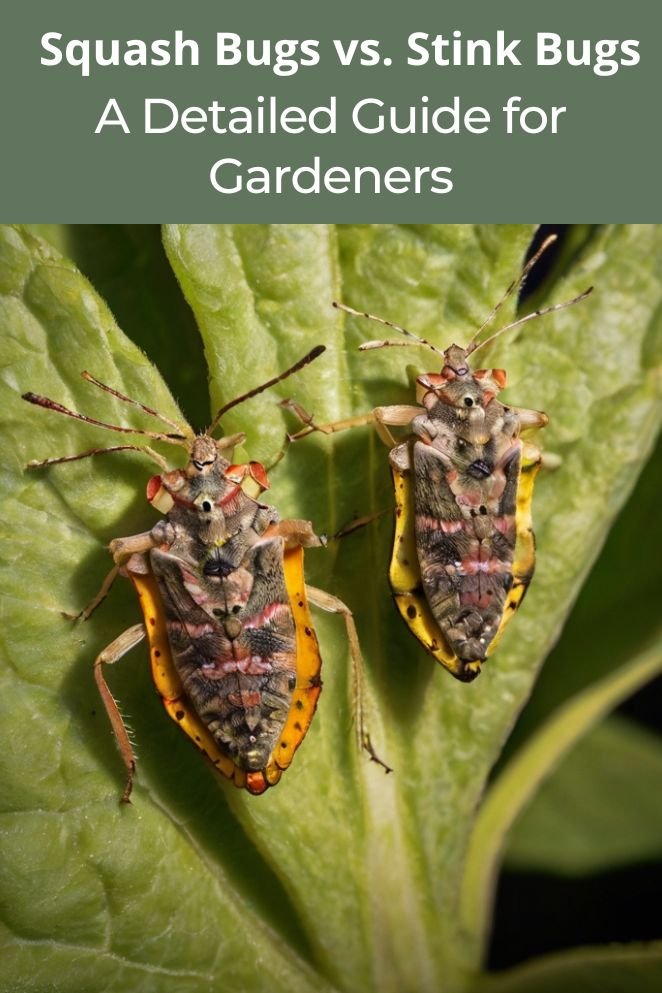
If you’re an avid gardener, chances are you’ve come across some unwelcome visitors among your plants.
Two common culprits that can wreak havoc in your garden are squash bugs and stink bugs.
While they may look similar at first glance, they have different behaviors, preferences, and methods of control.
In this guide, we’ll delve into the differences between squash bugs and stink bugs, helping you identify, manage, and prevent these pests effectively.
Overview of Squash Bugs
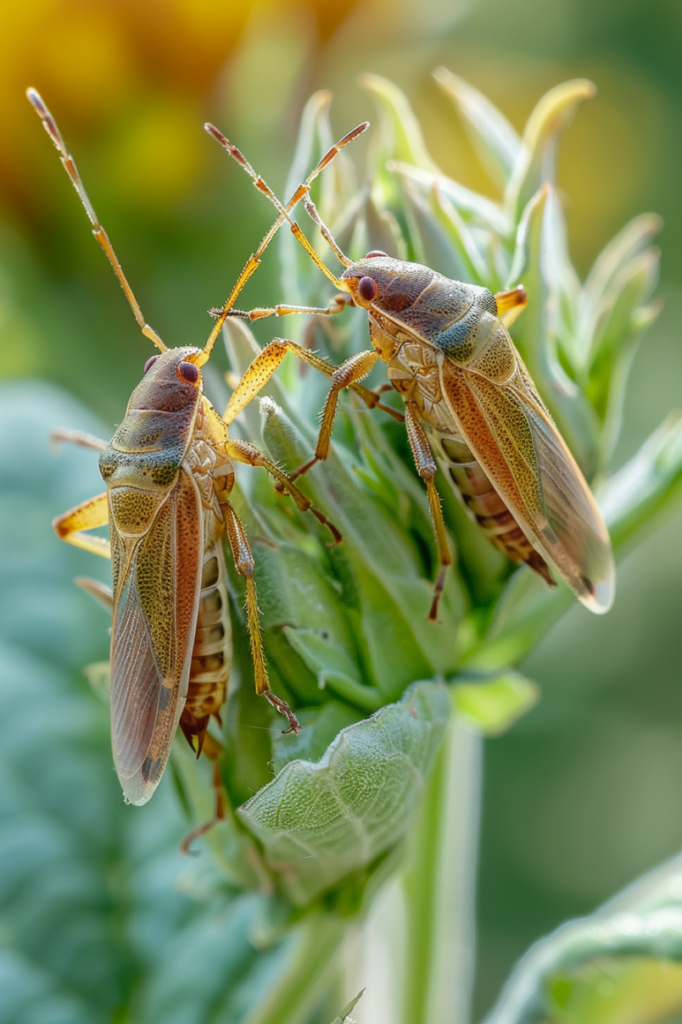
Squash bugs, known scientifically as Anasa tristis, are notorious pests for gardeners who grow squash, pumpkins, and other cucurbit plants.
These insects can cause significant damage if not managed properly.
Here’s a detailed look at what squash bugs are, their life cycle, and they behavior:
- Read also: A Guide to Eradication: Squash Bugs on Zucchini Plants
- Read also: Controlling Squash Bugs Organically: Tips for a Healthy Garden
Appearance
- Color: Grayish-brown back and alternating orange and brown stripes on the edges of their abdomen and underside.
- Size: About 5/8 inch long and 1/3 inch wide
- Shape: Flat, elongated bodies with a hard shell-like exterior
Life cycle
Squash bugs survive the winter as adults, hiding under plant debris, rocks, or in buildings.
They become active again in the spring, when temperatures start to rise.
There is typically one generation per year in northern climates and two to three generations in warmer regions. The life cycle of squash bugs involves several stages:
- Egg stage: Eggs are laid on the undersides of leaves. The eggs are reddish-brown and laid in clusters. Each female can lay several clusters throughout the growing season.
- Nymph stage: After about 10 days, the eggs hatch into nymphs. Nymphs go through several stages, called instars, before becoming adults. Nymphs are small, wingless, and have a light green to gray color.
- Adulthood: Nymphs mature into adults in about 4-6 weeks. Adults continue to feed and lay eggs throughout the summer.
Behavior
Squash bugs feed by piercing the leaves and stems of plants with their needle-like mouthparts and sucking out the sap, injecting a toxic saliva that can wilt and kill leaves and vines.
They primarily target squash, pumpkins, zucchini, and other cucurbit plants.
Overview of Stink Bugs
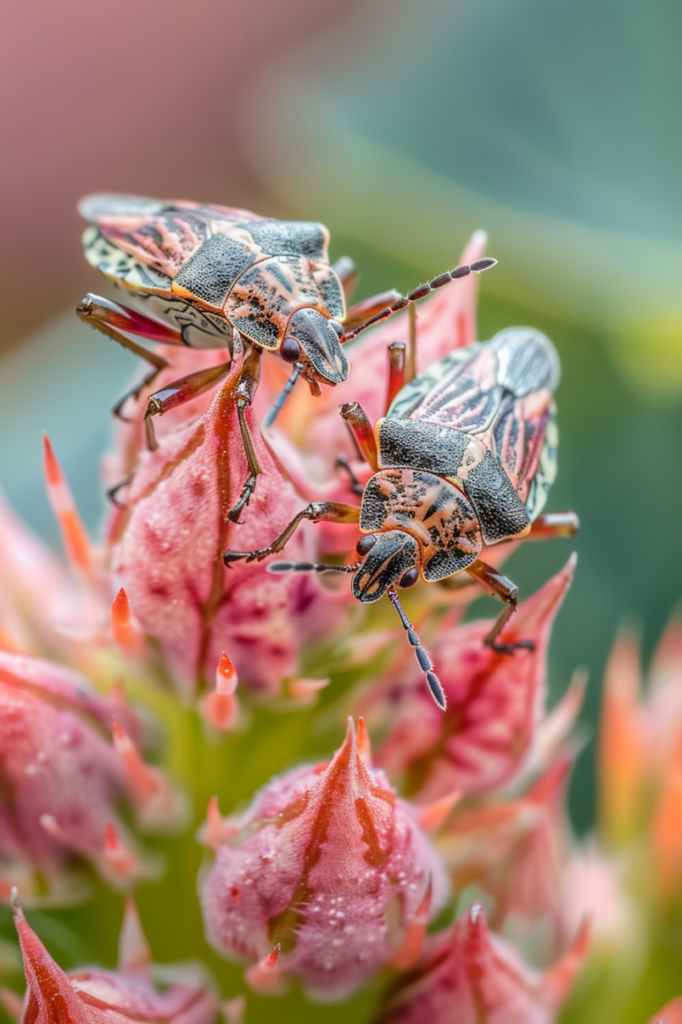
Stink bugs, including the well-known Brown marmorated stink bug (Halyomorpha halys), are common pests found in gardens and agricultural fields.
Here is a detailed overview of these insects:
Appearance
- Color: These bugs can be either green or brown, with the Brown Marmorated Stink Bug being particularly recognizable by its mottled brown appearance.
- Size: They are slightly larger than squash bugs, typically averaging about 3/4 inch in length.
- Shape: Stink bugs are easily identified by their shield-shaped bodies.
Lifecycle
The life cycle of stink bugs involves several distinct stages, each with its own characteristics and importance in the development of the insect:
Stage 1: Egg
Stink bug eggs are small, barrel-shaped, and typically laid in clusters on the underside of leaves.
The eggs are usually light green or white in color.
The egg stage lasts about 4-5 days, depending on temperature and environmental conditions.
Female stink bugs lay between 20-30 eggs at a time and can produce multiple batches throughout the growing season.
Eggs do not involve feeding.
They contain all necessary nutrients for embryo development.
Stage 2: Nymph stage
After hatching, stink bug nymphs go through five instar stages, gradually increasing in size with each molt.
Nymphs are wingless and often have different coloration and markings compared to adults.
The nymph stage lasts approximately 4-5 weeks, during which the nymphs feed on plant juices to support their growth and development.
Nymphs are highly active feeders and can cause significant damage to plants by piercing tissues and sucking out sap.
Stage 3: Adult
Adult stink bugs have fully developed wings and a characteristic shield-shaped body.
They are typically 3/4 inch in length and can be green, brown, or mottled in color.
Adults reach sexual maturity within a week or two after their final molt.
They then begin the process of mating and laying eggs.
Adult stink bugs can live for several months.
Behavior
They are particularly active during warm weather, as temperatures drop in the fall, adult stink bugs seek sheltered locations to overwinter.
They often invade homes, buildings, and other structures to find a warm, protected environment.
During the winter months, stink bugs remain dormant and do not feed.
They enter a state of diapause, conserving energy until the arrival of warmer weather.
Stink bugs are not as selective as squash bugs when it comes to their diet.
They feed on a wide range of plants, including fruits, vegetables, and ornamentals.
They use their needle-like mouthparts to pierce plant tissues and suck out the juices, causing discoloration, spots, and deformation of fruits and leaves.
One of the most distinctive features of stink bugs is the foul odor they emit when disturbed.
This odor serves as a defense mechanism to deter predators.
The smell can be quite strong and unpleasant, making it an effective deterrent.
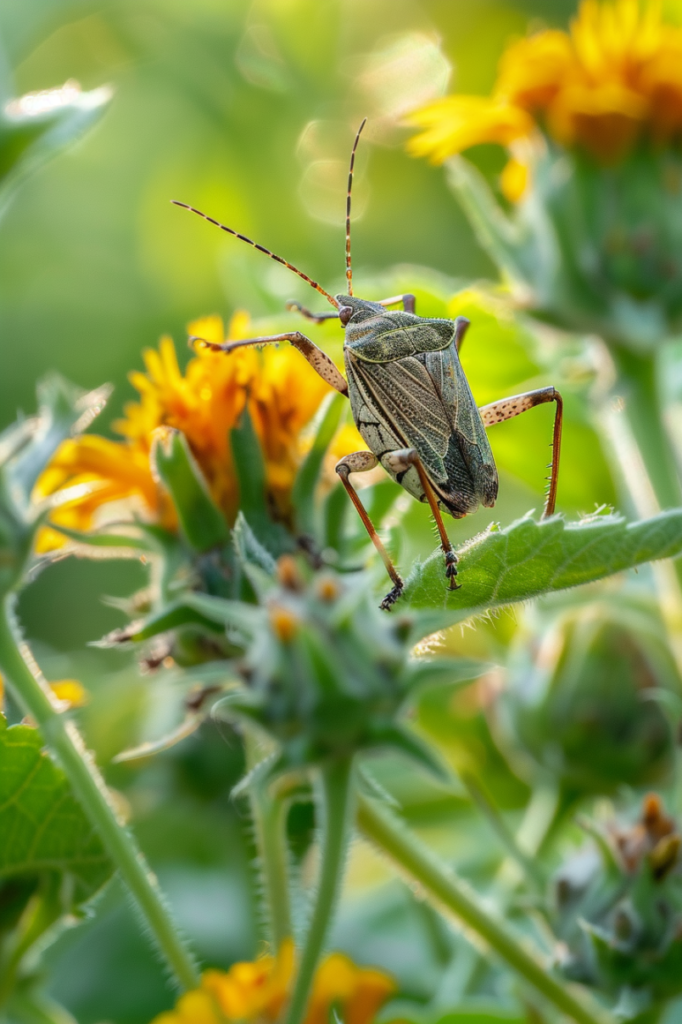
The Key Differences: Squash Bugs vs. Stink Bugs
Now that we’ve covered the basics, let’s dive into the key differences between squash bugs and stink bugs:
| The Differences | Squash bugs | Stink bugs |
| Appearance | Squash bugs are more than half an inch long with flat backs and brown or gray bodies. Nymphs have gray bodies and black legs. They have orange stripes on their abdomens |
Stink bugs are wider and rounder, with a shield-like body shape. They are almost as wide as they are long. Their bodies are brown, gray, or green
|
| Behavior | They are known to fly but usually walk from plant to plant. They are fast movers and can be found on the bottoms of leaves. They hide out in piles of dead leaves and other outdoor clutter during the winter |
They also destroy plants for their juice and transmit yeast-spot disease, which slows down plant production. They have few predators due to their unpleasant taste
|
| Diet | They inject toxins into plants and suck their sap, causing leaves to wilt and stems to fall |
They suck sap from fruits, seeds, and stems, creating holes near the base of the plant
|
| Eggs | Dark-colored eggs are laid beneath leaves |
Light-colored eggs are laid on plants or nearby structures
|
| Odor | Only emit an unpleasant odor when crushed |
Can release their stink at will, specifically when disturbed
|
- Read also: Battling Bugs: Whitefly vs. Aphid – Know the Difference
- Read also: Clover Mite vs. Spider Mite: Understanding the Differences
Conclusion
Distinguishing between squash bugs and stink bugs is crucial for effective garden pest management.
While both can cause significant damage, understanding their differences helps in tailoring control methods specific to each pest.
Squash bugs primarily target cucurbits and cause wilting and disease transmission, while stink bugs have a broader diet and cause cosmetic damage to a variety of plants.
Stink bugs are known for the foul odor they release when threatened, a natural defense to ward off predators.
In contrast, squash bugs emit an unpleasant smell only when they are crushed.
To safeguard your garden from these harmful pests, it’s important to stay alert and take action early.
Use preventive strategies, organic methods, and, if needed, chemical treatments to ensure your plants remain healthy and vigorous.

